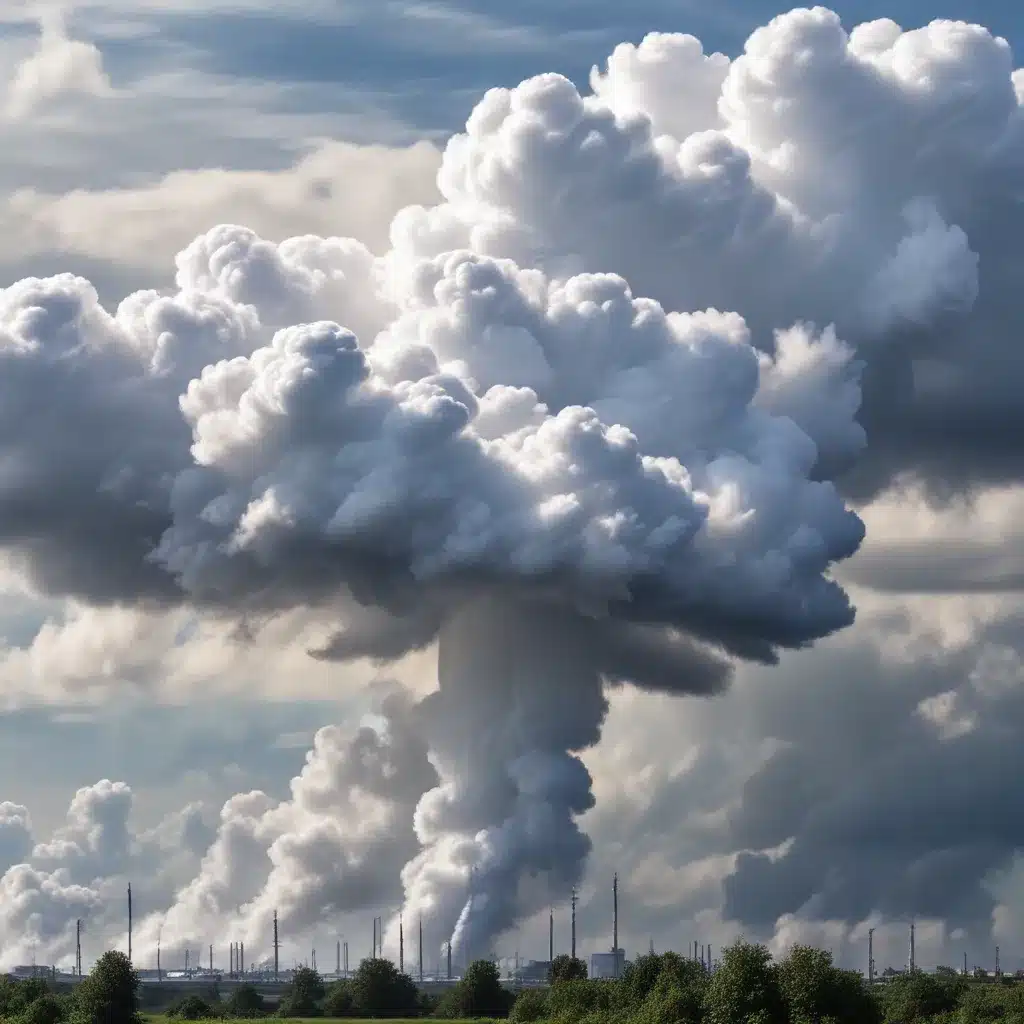
Understanding the Significance of Aqueous-Phase Chemistry in Residential Wood Stove Emissions
As a seasoned expert in wood stoves and heating solutions, I’m excited to share insights into the crucial role that in-cloud chemistry plays in the formation of secondary organic aerosol (SOA) from biomass burning emissions. This is an important topic that has significant implications for climate, air quality, and the overall environmental impact of residential wood combustion.
Recent research has highlighted the substantial contribution of aqueous-phase chemistry to SOA production, surpassing the traditional understanding of gas-phase oxidation alone. By simulating the cloud processing of residential wood burning emissions under realistic conditions, we can gain a deeper appreciation for this complex but vital atmospheric process.
Aqueous-Phase Chemistry: The Missing Piece in SOA Formation
Organic aerosol (OA) is a major component of atmospheric fine particulate matter, with secondary organic aerosol (SOA) accounting for up to 76% of ambient OA. While our understanding of gas-phase SOA formation has advanced significantly, the role of in-cloud chemistry in SOA production has received far less attention.
Water-soluble organic gases (WSOGs) emitted from biomass burning can dissolve into cloud droplets and undergo aqueous-phase reactions, forming highly oxygenated, low-volatility compounds that contribute to aqueous SOA (aqSOA) formation. This process has been observed during haze episodes in China and foggy periods in the Po Valley, where remarkably high concentrations of aqSOA have been documented.
However, the specific compounds from biomass burning that contribute to this aqueous-phase chemistry and the resulting aqSOA formation have remained largely unknown. This knowledge gap is crucial to address, as biomass burning, including residential wood combustion, represents the second-largest global source of non-methane organic gases (NMOGs) after biogenic emissions.
Simulating In-Cloud Processes in the Laboratory
To overcome the limitations of traditional laboratory experiments, which often fail to accurately mimic aqSOA formation under atmospherically relevant conditions, our research team utilized a state-of-the-art wetted-wall flow reactor (WFR) to study the aqueous-phase chemistry of residential wood burning emissions.
The WFR allowed us to simulate the in-cloud production of aqSOA under controlled conditions, with a focus on gas-liquid phase partitioning, aqueous-phase oxidation, and the resulting chemical composition of the aqSOA. By introducing the wood burning emissions into the WFR, along with OH radicals and water vapor, we were able to quantify the water solubility of the organic compounds and determine their potential to contribute to aqSOA formation.
Key Findings: Substantial Contribution of Aq SOA from Biomass Burning
Our research revealed several critical insights into the aqueous-phase chemistry of biomass burning emissions and its impact on SOA formation:
-
Water Solubility of Organic Compounds: While only 1% of the organic compounds in the wood burning emissions were fully water-soluble, an additional 19% exhibited moderate solubility and could partition into the aqueous phase in a typical cloud environment.
-
Aqueous-Phase Oxidation and Oligomerization: The aqSOA generated in our laboratory experiments showed a substantial fraction attributed to the formation of oligomers in the aqueous phase, indicating the importance of these complex processing pathways.
-
Aq SOA Yields Surpass Gas-Phase SOA: We determined an aqSOA yield of 20% from residential wood combustion, which surpasses current estimates based on gas-phase oxidation alone, which reached a maximum of only 17%.
These findings highlight the significant contribution of in-cloud chemistry to the overall SOA formation from biomass burning emissions, with aqSOA production being 2-7 times higher than the contribution from primary biomass burning organic aerosol (BBOA) emissions.
Implications for Climate and Air Quality
The large contribution of biomass burning-derived cloud chemistry to aqSOA formation has important implications for both climate and regional air quality. While our study focused on residential wood burning, it is crucial to note that wildfires and prescribed open burning have also become more frequent in many regions due to the increasing frequency and intensity of heatwaves and droughts.
The organic gases emitted from these biomass burning sources will not only undergo gas-phase oxidation but will also dissolve in cloud water, contributing to aqSOA production. This process can influence the radiative properties of the atmosphere and affect regional climate patterns.
Furthermore, the high concentrations of aqSOA observed during haze events in China and foggy periods in the Po Valley highlight the significant impact of in-cloud chemistry on local and regional air quality. Understanding the contribution of aqSOA from biomass burning is essential for developing effective air quality management strategies and reducing the adverse health effects associated with particulate matter pollution.
Conclusion: Embracing the Complexity of Atmospheric Chemistry
The large contribution of in-cloud production of secondary organic aerosol from biomass burning emissions underscores the need for a comprehensive understanding of atmospheric chemistry. By simulating the aqueous-phase processing of wood stove emissions in the laboratory, we have gained valuable insights into the mechanisms and significance of this often-overlooked atmospheric process.
As we continue to explore the complex interplay between gas-phase and aqueous-phase chemistry, we can better inform climate and air quality models, ultimately leading to more effective strategies for mitigating the environmental impact of residential wood combustion and other biomass burning sources.
At Wood Stove Heaters, we are committed to providing our readers with the latest, most accurate information on wood stove technology, heating solutions, and environmental considerations. By staying at the forefront of research in this field, we aim to empower our audience to make informed decisions and contribute to a more sustainable future.


